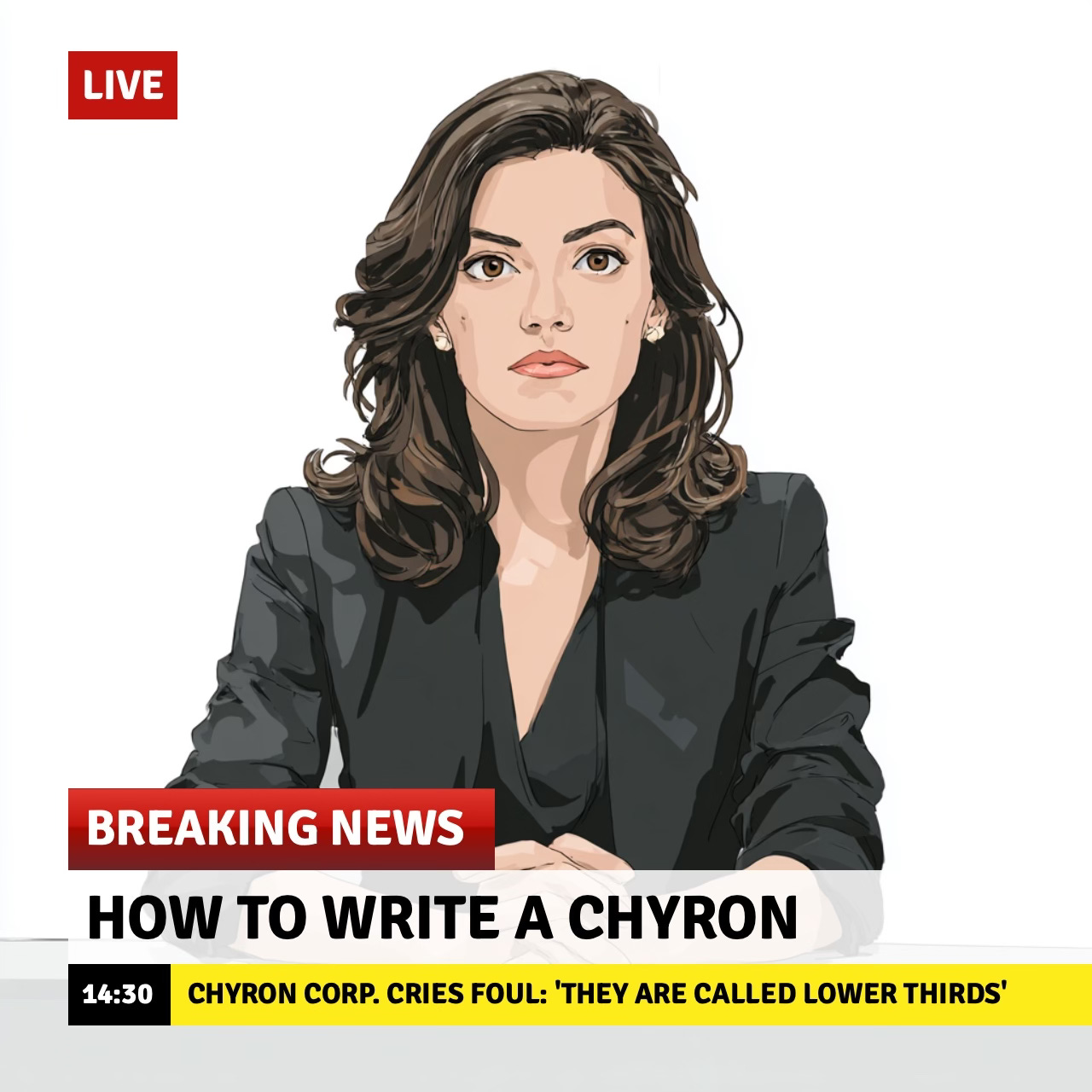How to Write a Chyron
MSNBC's Lorena Ruiz explains how to write a lower third
If a chyron is doing its job right, you won’t even think of it.
But the art of writing a caption to run along the bottom of the screen during a TV news segment is harder than you’d think.
Lorena M. Ruiz, a senior producer on MSNBC's “The Weeknight,” walked us through the process.
Do you call them chyrons?
Sometimes I call them chyrons, but there are several other ways to describe them. A general term is Lower Thirds or L3 or even some people just say lowers, and that includes any of the graphics we see on the lower third of the screen. Other names include Banners, which can be topical banners or name banners.
Chryon is actually a company that makes graphics hardware and software. It’s a brand name. We do not currently use Chyrons at MSNBC, we switched to Viz, a different brand. People still refer to them as chyrons, and we call our graphics operators chyron operators.
What is the purpose of a chyron?
The purpose of chyrons is to provide visual information to audiences, especially if they have the sound off. Name banners tell them who is speaking, whether it is a guest on set or a politician in a soundbite. Topical banners give a sense of the topic we are discussing. Sometimes it is very broad, other times — like when accompanying a soundbite — can be very specific.
Who is in charge of deciding what a chyron should say?
Who decides what the banners say is show dependent. Generally, they are written by segment producers, who are most familiar with the stories they are writing. They are then generally approved by an SP like me and in some cases also approved by the Exec Producer. Name banners are sometimes written by line producers, it just depends on the team. That's where we show a guest's names and titles.
Do you know a journalist who you think should be featured in a My First Byline? Tell us using the form below.
How often does a chyron need to change on screen?
5. When it comes to naming guests or speakers, there is an MSNBC style guide- what to abbreviate, who doesn't get a name banner (The President, VP, FLOTUS, the Pope) along with specific examples:
CHYRON FORMAT
-Name
-Organization
-Title
For example:
Phil Rucker
Washington Post
White House Bureau Chief
CABINET MEMBERS
Mike Pompeo
Secretary of State
LAWMAKERS
Sen. Mitt Romney
(R) Utah
When it comes to topical banners, they can be one or two lines. Some teams, such as “The Weeknight,” prefer one-line banners, as they appear less squishy, but sometimes they are necessary. Other teams consistently use two-line banners. It is a style preference. One limitation on topical banners is character count. I believe it is 55 characters for one-line banners, but I don't have them memorized as Viz simply won't allow you to add more characters once you hit the limit. Because of this, abbreviations are commonly used in banners.
Editorially, you want to make it informative and catchy, something that grabs someone's attention and they want to know more. They can also be quotes. some examples of recent topical banners:
TRUMP DOJ LEADERS AT ODDS OVER EPSTEIN FILES FALLOUT
TRUMP FACES MAGA REVOLT OVER EPSTEIN FILES
JEFFRIES ON EPSTEIN FILES: AMERICANS DESERVE THE TRUTH
You want to use standard news writing guidance, like a headline with a limited character count.
What are some common mistakes that you see with chyrons?
I have never timed how long chyrons stay up. In a conversation, I would say each one is up for maybe 20 seconds. The operator is generally cycling through a stack of banners for that segment. If we want a specific banner in a conversation to go up, we just ask the director or operator for that banner. The director calls for name banners, as they know who they are going to put up on the screen. We can also put banners in a script and in elements, to indicate specifically where those banners go.
The most common and infuriating mistake with banners are typos. Sometimes in breaking news you are crashing out a banner and it is easy to make mistakes. We try to always get multiple sets of eyes on banners whenever possible. Grammatical mistakes would be next, and least common but terrifying are factual mistakes. we try to avoid those at all costs.
Find Lorena on LinkedIn.



